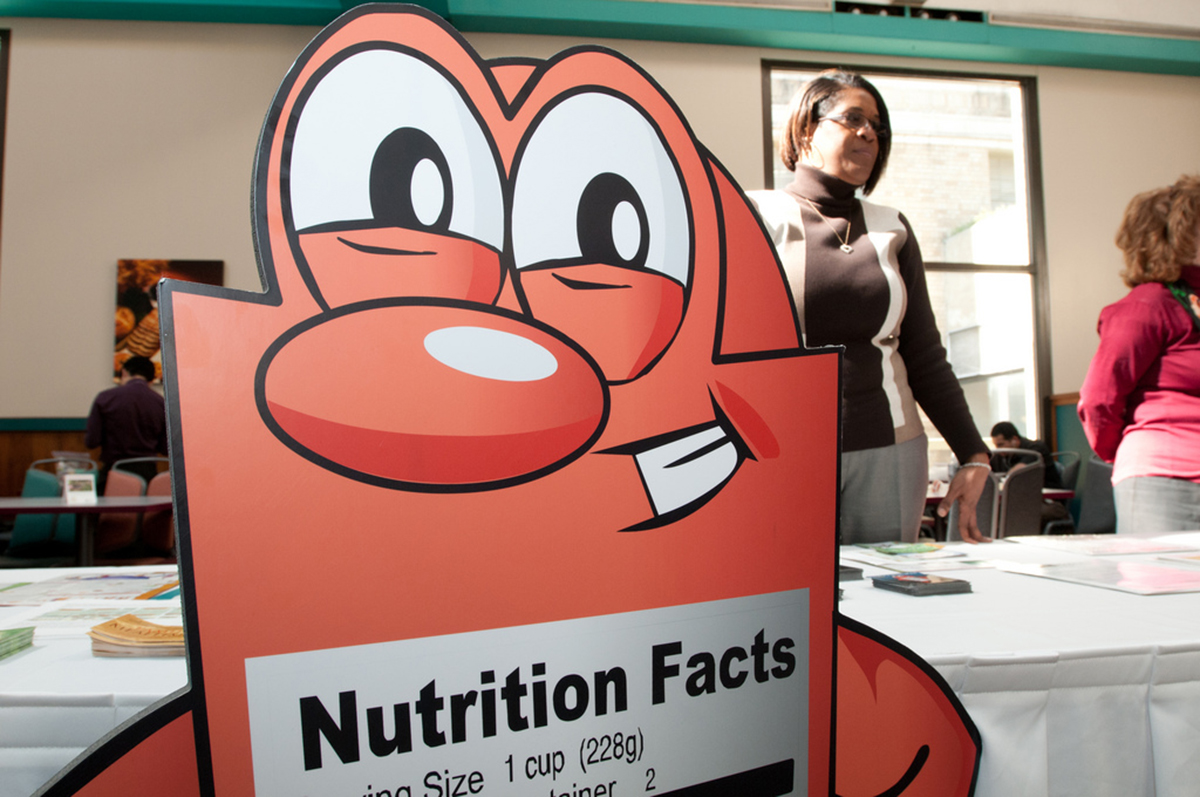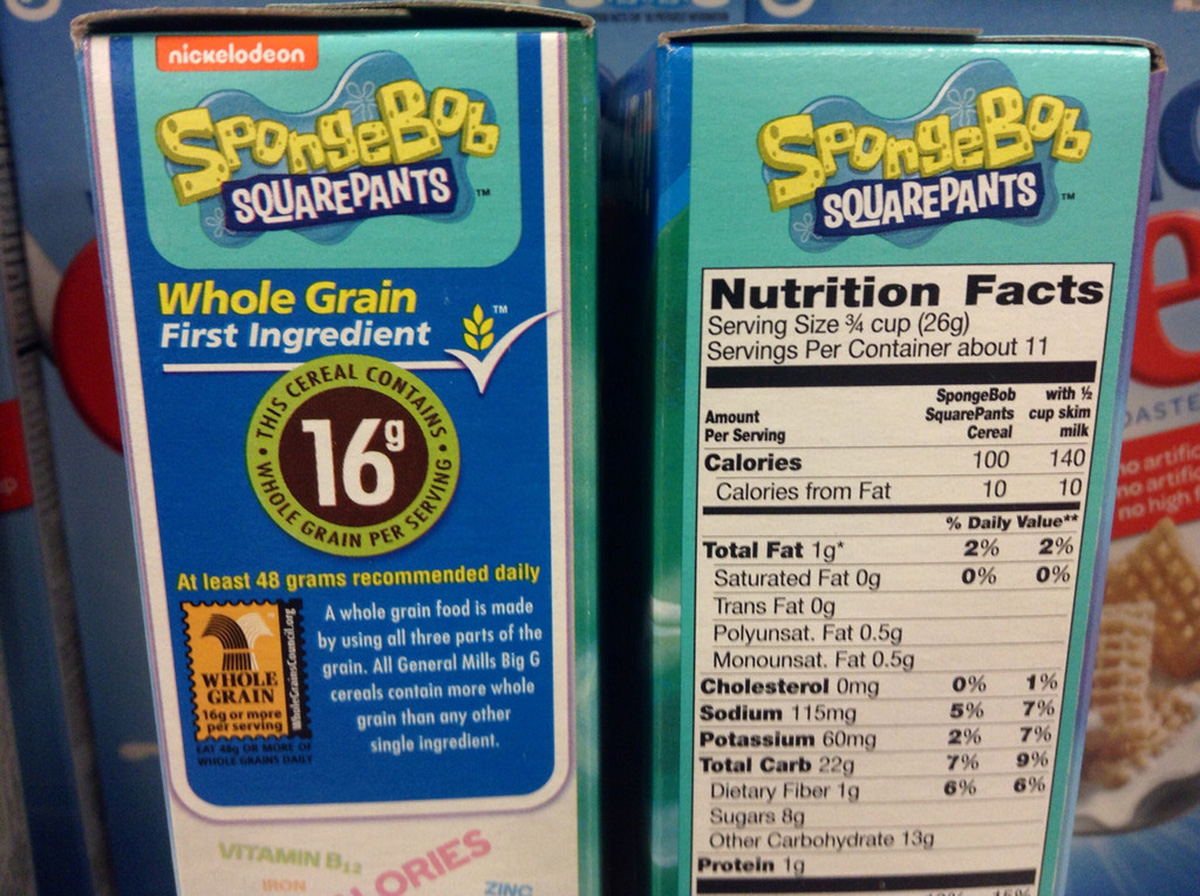Every government across the world is putting a lot more emphasis on the need for more information about what exactly we are eating, and what it contains. With obesity rates on the rise across the entire globe, the phrase "we are what we eat" has never been more prevalent, and it's time that we as a society stopped being ignorant to what is exactly in our foods.
So, what is in our foods?

Currently a food label contains the following break down:
- calories
- carbohydrate (of which sugars)
- protein
- sodium
- cholesterol
- fat (saturated/unsaturated)
- vitamin/mineral content
Most of us have heard of all these things, but don't really know what they do to their body. Luckily for you, we've compiled a detailed summary of all the things on a food label. What are you waiting for?
Let's take a detailed look at all of these components, what they do to you, and what you should look out for.
Calories
This is probably the most widely understood and misunderstood quantity that is present on all food labels. The number given is the amount of calories found in this product — but be careful because it sometimes says per serving (e.g. 30g) or can be per 100g. And often a product is much more than that, therefore its important to check how much you are consuming. For example, a bag of nuts may have a label showing the calories per serving (25g) as 250 but the bag could be 100g. Looking quickly you could think that's not many — 250 — but eat the whole bag and you'll actually consume 1000!
Calories can often be used too heavily to determine a good or bad diet, but what is more important is where those calories are from. For example something that only has 150 calories may seem great at first glance, but if 90 percent of those calories come from fat then it isn't great after all.
Carbohydrate
Generally speaking, carbohydrates are sugars, and every carbohydrate molecule is made up of single molecules of sugar. Complex carbs are lots of sugars combined and takes a long time to digest (examples are wheat and grains), whereas simple carbs are single molecules and are digested quickly and provide a fast energy burst like table sugar and honey. You need a combination of both but a lot less of the simple sugars than complex.
On food labels the carbohydrate section is often broken down into dietary fiber (complex) and sugars (simple). The higher the dietary fiber, the longer lasting the energy will be and more useful to the body over time, whereas the sugars actually contribute to your maximum allowance of sugar per day. It is important when trying to maintain a healthy diet that your foods do not contain high levels of simple sugars, but if you are trying to lose weight too much dietary fiber can be stored as fat if not burnt off.
Protein
Protein is an essential macronutrient is one of the three main contributions to our diet. On average, you should be taking in at least 1g of protein per 1kg of your body weight. For example a 70kg male should be eating 70g of protein per day. This is essential to maintain and build muscle both while training but for every day life. There are many ways to increase your protein intake and it is found in large amounts in meat and dairy.
See Also: Budget Food: Cheap And Healthy Meals For Beginners
This is normally the least important factor to check on a food label, unless you are on a high protein diet. But be careful not to take in too much because this can put stress on the liver and lead to problems in the future.
Using Food Labels To Become A More Mindful Consumer
Sodium
Another part of the food label that can be misinterpreted is the sodium content. Many people think that this is the equivalent to how much salt is in your food product, which in part it is but it is only a fraction of the actual salt content. When you have a sodium figure you have to times that by 2.6 to get the actual salt that is contained in the product so this information can often be misleading. The simplest thing to do is just double what ever the sodium value is to get a more accurate value of the salt because too much salt is linked to many cardiac problems such as heart attack and blocked arteries.

Cholesterol
There are two types of cholesterol - HDL and LDL. LDL is the bad cholesterol that builds up and can lead to blocked arteries and the HDL is good cholesterol because this takes away fatty lipids to be broken down by the liver and expelled. It is difficult to monitor the amount of cholesterol a person takes in daily but many food labels are now starting to show the amount potentially in the food product. The way to test your cholesterol is to get a blood test to show how much there is in your blood stream and any food that has a high level of cholesterol will add to this.
Fat
The biggest and scariest of all the information on the food label is the fat content. But, for all its problems there are many benefits to certain fats and the body needs it for protection and insulation of the organs. On a food label you often find a breakdown of saturated and unsaturated fats, saturated fat is the worst of the two and is often high in cholesterol and stored as fat in the places we don't want it! On average you should consume no more than 30g for men and 20g for women per day.
They are low in cholesterol and are used by the body for energy and insulation. They can also be found in many fruit and vegetables such as avocadoes. On average you should consume about 70g total across all types of fat but this varies depending on your goals (weight loss/gain).
Vitamins And Minerals
At the bottom of the label there is another section titles vitamins and minerals and this is where it is listed what main vitamins etc can be found in this product and in what quantity. The best thing about this is it is very easy to read and the information is given in percentage of your daily intake so you can look very quickly and see what is good. Any food which as hardly any vitamin or mineral percentage is of very low nutritional value and probably should be avoided or eaten in small amounts.
See Also: Ten Unusual And Healthy Vegetables You Need To Try
Its important to check with a doctor if you are concerned about any diet changes but remember to look at the food label for processed foods in particular so you know exactly what you are eating.
- Photo courtesy of USDAgov via Flickr: www.flickr.com/photos/usdagov/5492954135
- Photo courtesy of JeepersMedia via Flickr: www.flickr.com/photos/jeepersmedia/15172260936
- www.nhs.co.uk www.bda.uk.com

